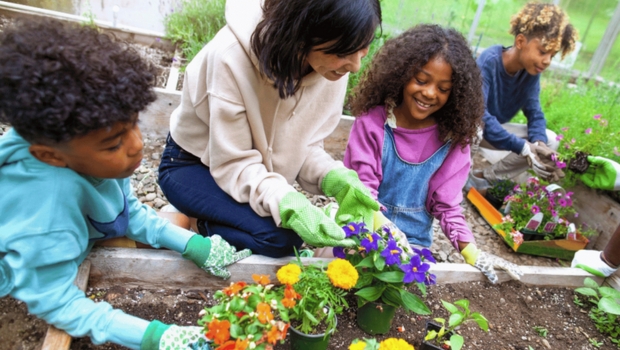Planting Seeds of Knowledge: Teaching Kids About the Origin of Foods
There is a growing disconnect between children and the origins of their food. It stems from the urbanization of communities and the prevalence of processed foods. As a result, many children are unaware of how their food is grown, processed and brought to them, contributing to a lack of understanding about the nutritional value and environmental impact of their choices.
Why Knowing Food Origins Matters
A 2012 study by Stanford University showed that teaching young children that food is a source of diverse nutrients and explaining the importance of eating a variety of healthy ingredients significantly improved their understanding of nutrition, and even prompted them to voluntarily eat more vegetables at snack time.
“Gardens are a crucial part of how we change eating patterns and teach about health,” shares Sara McCamant, program director at Ceres Community Project (CCP), a nonprofit that provides meals to people facing health crises. “We put youth at the center of our program with the goal of having them understand where food comes from, as well as learning how to cook it, so it can create health. It is crucial that they understand the bigger picture of how food is grown and how the food system impacts access to healthy food. Many youth are also very concerned about the environment and climate change, and learning about growing food in a sustainable way gives them a way to make an impact on the environment.”
CCP reports that teens participating in their programs are more motivated to consume vegetables and fruits than other kids their age: 54 percent are eating six or more servings of produce a day. By contrast, only 22 percent of California teenagers that have not experienced CCP activities eat five or more servings a day.
Pilot studies by Harvest for Healthy Kids and the National Institute of Food and Agriculture both found that hands-on experiences with different fruits and vegetables in the classroom, garden and kitchen caused children to be more likely to taste—and enjoy—a wider variety of foods.
Cultural Heritage
“Children’s limited recognition of food mirrors a deeper loss of cultural identity and heritage,” laments Sebastian White, founder, president and executive director of The Evolved Network. The limited understanding of food through commercial packaging not only deprives children of the rich stories and meanings embedded in their cultural diets, but also reflects broader implications for how they perceive and interact with the world.
“The Evolved Network addresses these issues by integrating the tangible aspects of food preparation, such as cooking skills and community building, with intangible values like cooking with love and the significance of meals as communal gifts,” White explains. “This holistic approach fosters a sense of purpose and inclusivity, treating food education as both therapeutic and educational, with the goal of restoring a deep connection to food that transcends mere nutrition and taps into cultural identity and self-expression.”
Empowering children with knowledge about their food sources is a vital step toward fostering a healthier and more sustainable future. By engaging in hands-on experiences and understanding the journey of food from seed to plate, children can develop a deeper appreciation for nature, make informed dietary choices and support the environment.
What We Can Do
- Visit local farms or farmers markets. Encourage children to ask farmers about how food is grown and the significance of seasonal produce. This direct connection can spark curiosity and appreciation for the hard work behind each item on their plate.
- Start a family garden. Create a small bed or planter box so children can grow some of their own vegetables, herbs and fruits. This active participation not only teaches them about the growth process, but also instills a sense of responsibility and pride in nurturing and harvesting their own food.
- Cook together using fresh, whole ingredients. Teach children how to read labels and choose organic and minimally processed options. Preparing meals together provides an opportunity for practical learning about nutrition and the importance of making healthy choices. Plus, it’s a fun way to bond and instill lifelong skills.
- Eat as a family. Sit-down meals with kids can leave a lasting and positive impression, fostering a lifelong appreciation of dietary quality and communal dining. A 2007 five-year study published in the Journal of the American Dietetic Association found that more frequent family meals during adolescence predicted a higher consumption of fruits, vegetables and key nutrients, and a lower consumption of soft drinks. The young people also placed a higher priority on meal structure and social eating.
Thais Harris is a holistic nutritionist and author. Her children’s book, Little Red, told from the point of view of an apple, teaches children about the benefits of consuming fresh fruit. Find recipes and resources at NourishTogether.com.
This article appears in the July 2024 issue of Natural Awakenings.




























